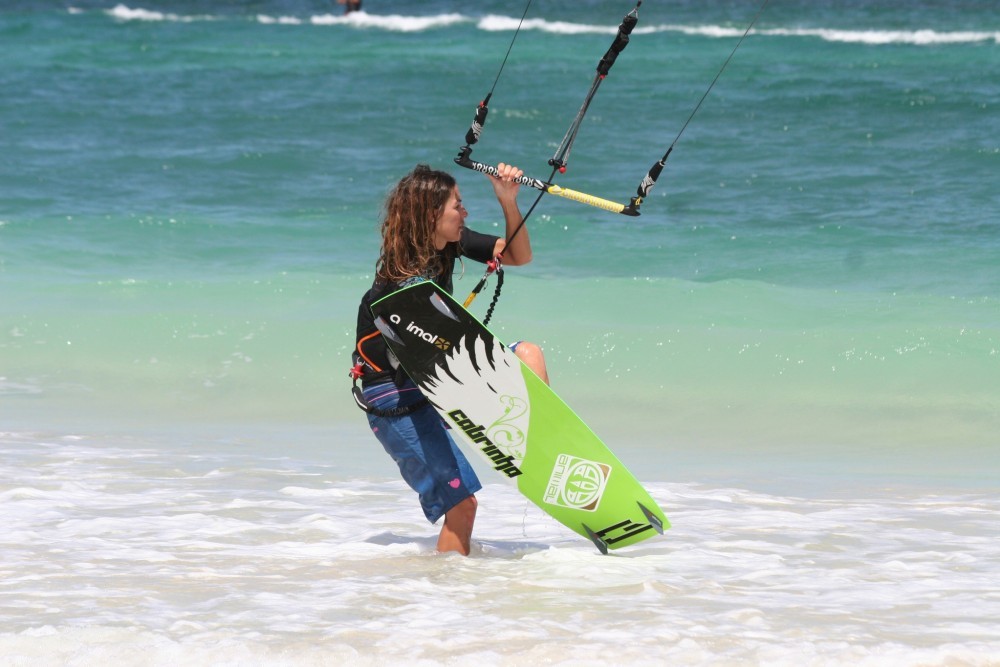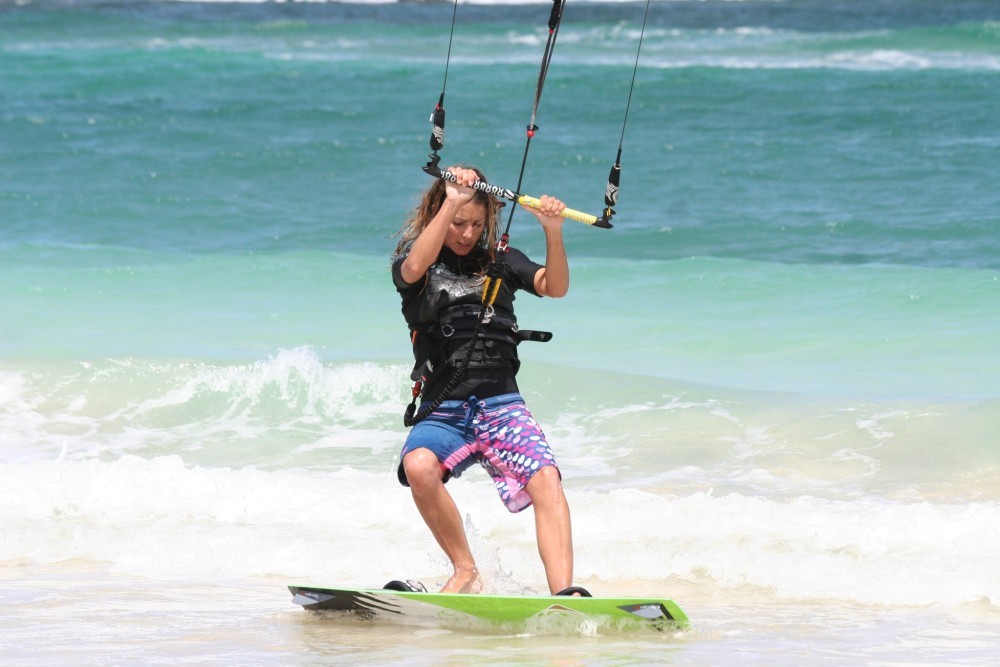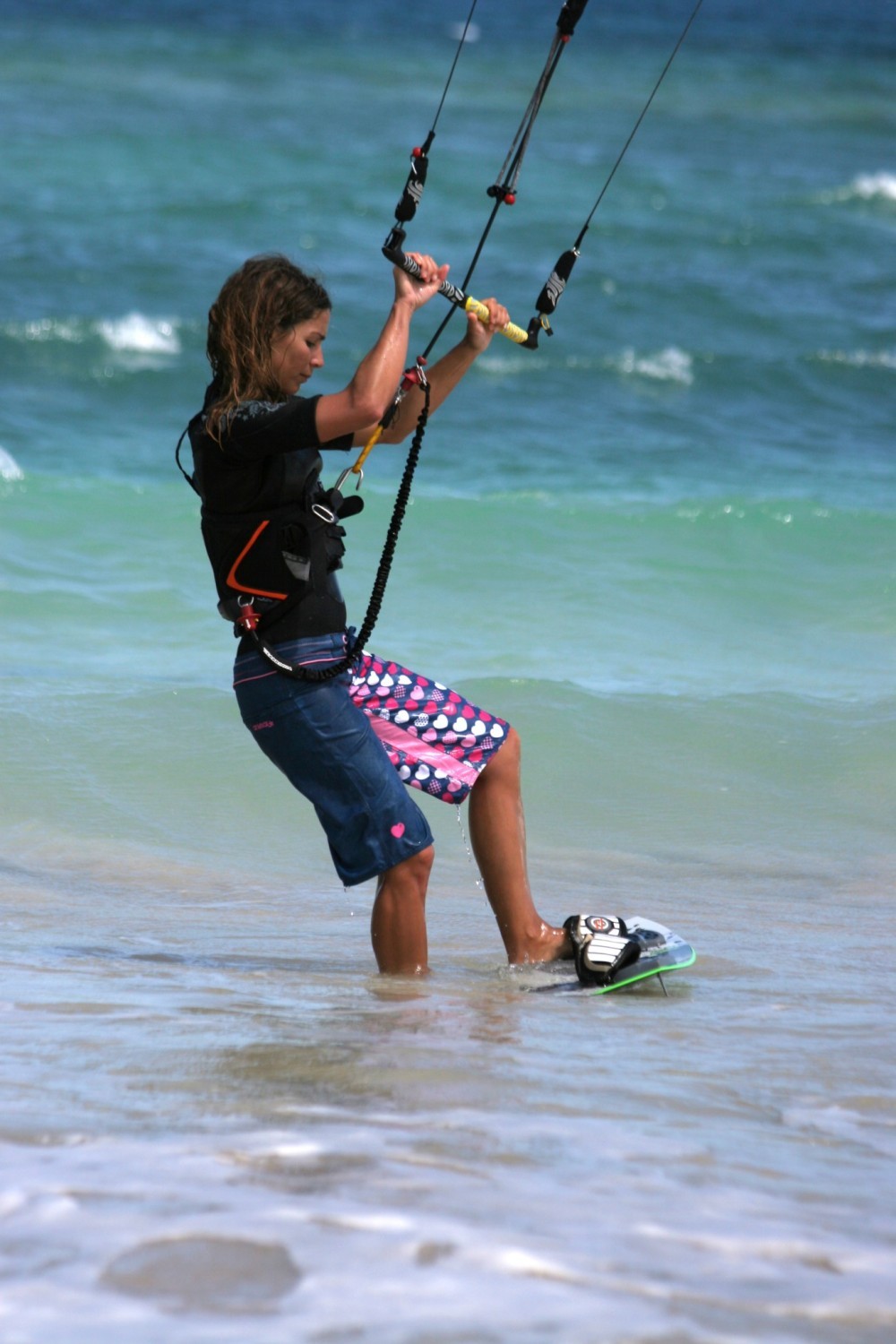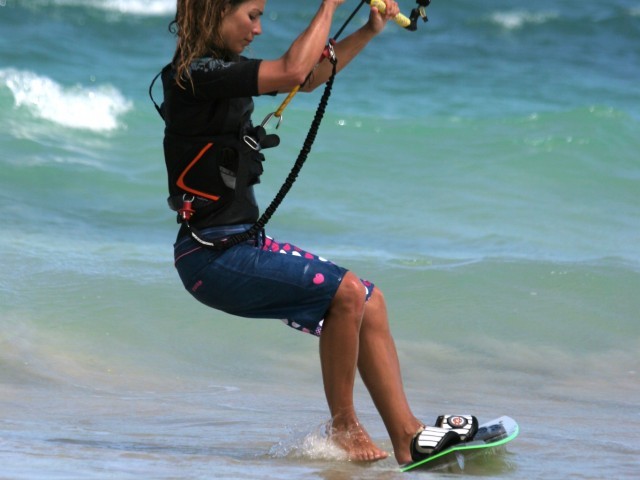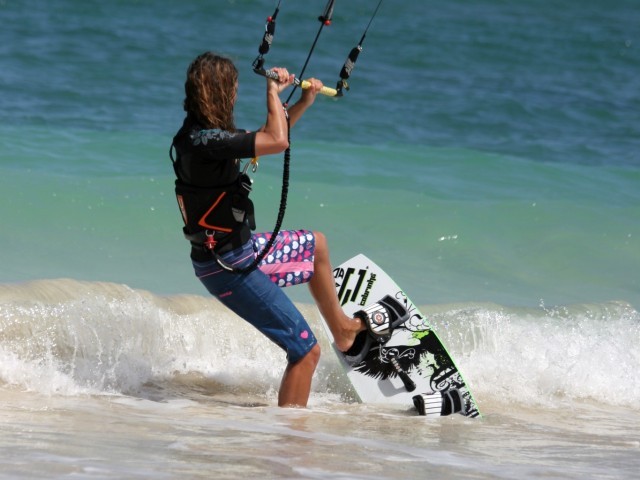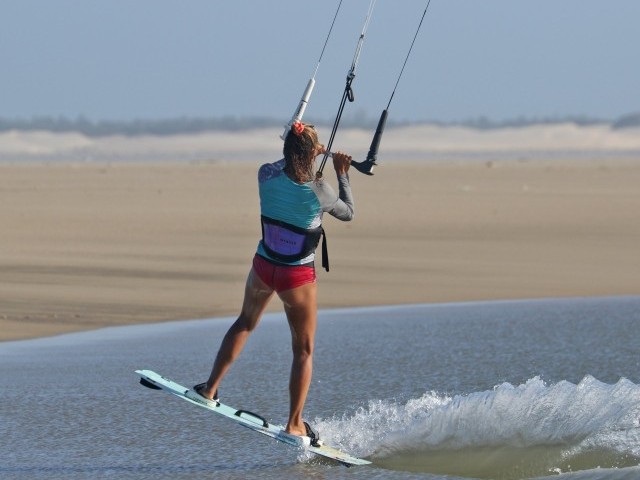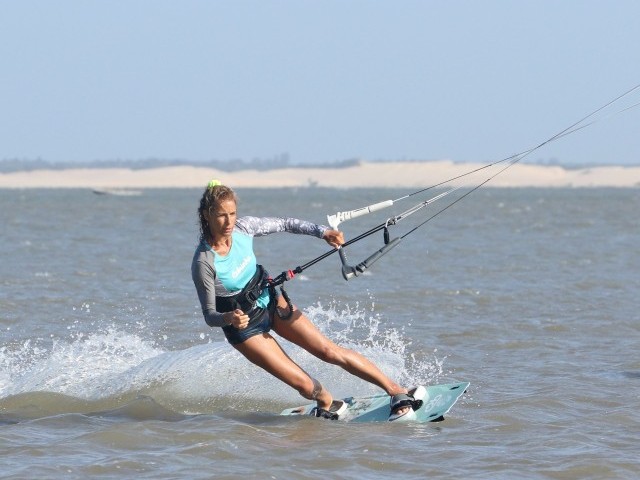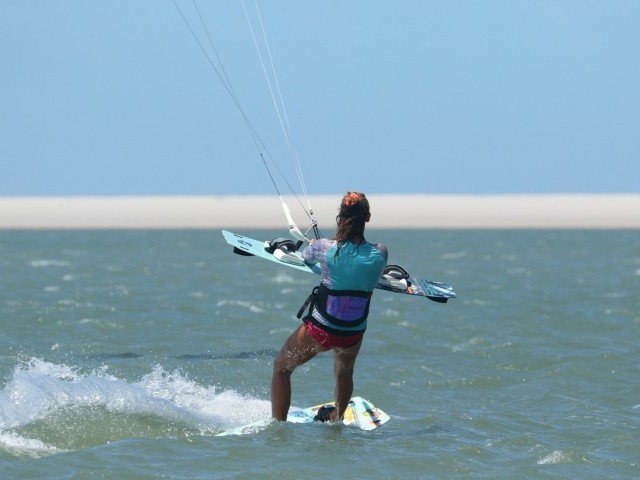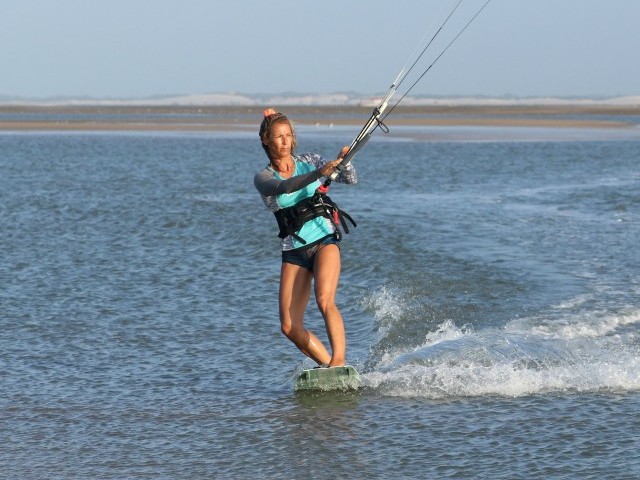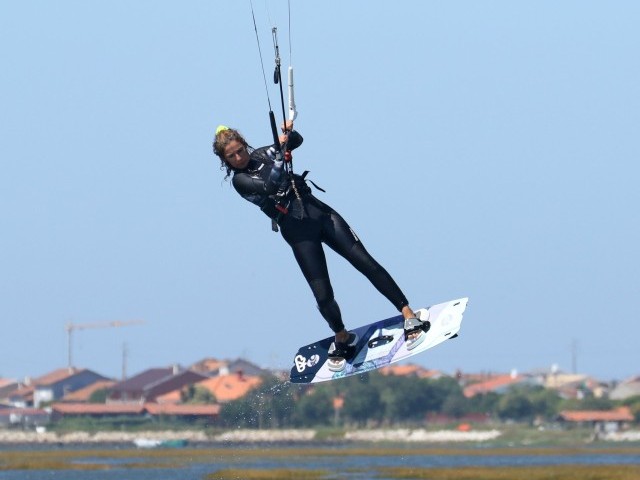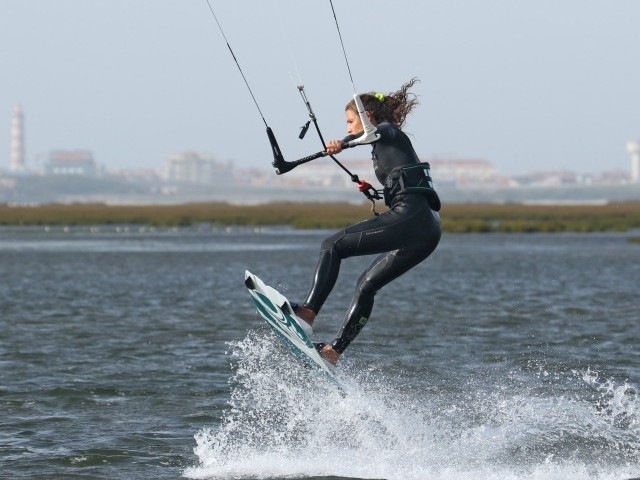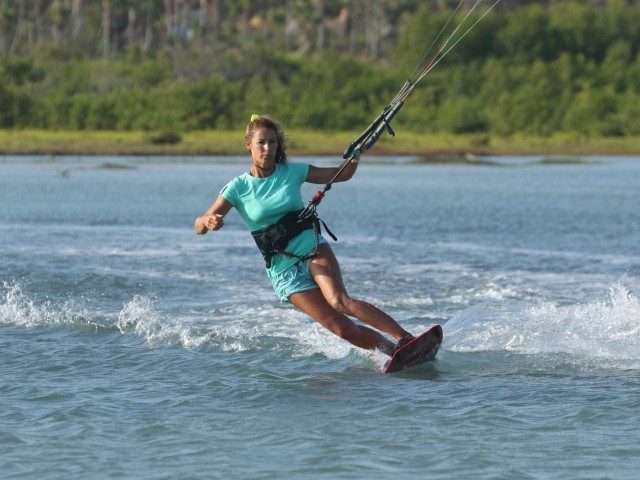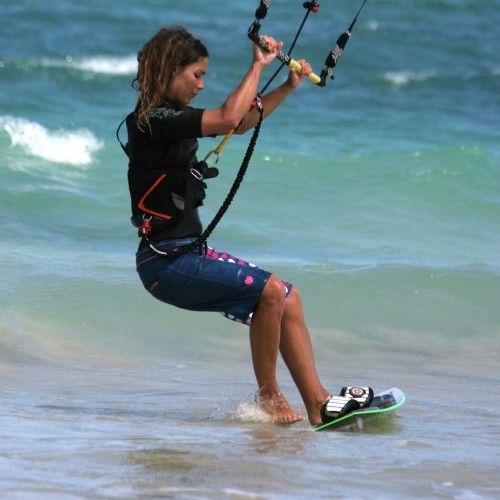
Beach Start
Technique / Beginner
Introduction
Being able to jump on your board and ride off into the sunset without dipping your derriere into the chilly April drink is a veritable pleasure. In it’s simplest form, and attempted in the right conditions, the beach start in Video 1 is well within every up winders grasp.
As with so many elements of kiting, most of the skills required to make this work are already stored somewhere in your body, and merely require a bit of cut and pasting, and practice to merit a successful attempt. Yet again you will no doubt find it easier on one side than the other, but persevere with both.
The Board
The essence of the beach start is timing what you do with your feet and the board along with the right amount of power from the kite.
Your first mission, should you agree, is to get the board onto your front foot. There are two methods to do this. The preferred method, if you’re not wrapped up in centre metres of neoprene is to place your foot in the front strap whilst holding the handle or the toe side edge, before putting the board in the water as in Pic A. This way the board wont run off in the current or the waves. However this method does require a modicum of balance. The second method to get those pinkies in is to place the board down on the water and slide the front foot in. This is simpler on the balance and flexibility front, but the board is free to misbehave and if you’ve got booties on it’ll be hard to get your foot in properly.
You will in fact be performing a dry water start. That means that as the power comes on you’ll be wise to have the board pointing slightly off the wind as opposed to across it. This has two advantages. Firstly as you fumble to get your back foot in, with the nose of the board facing the eventual position of the kite, you are a lot less likely to catch your toeside edge and end up flat on your face. Secondly as the power comes on, with the board chasing the kite, you will be in control and therefore can decide when you are comfy and ready to carve the board onto it’s heelside edge, put more tension into the lines and hare off into the distance.
The final piece of the board puzzle will be getting your back foot into its desired position, in the back strap, when the time comes. A dose of on land simulation will help no end. Stand on the beach without your kite, get your front foot in its strap and practice poking the back one in and out just to get used to where it goes. Looking down to make sure you’re doing it right is highly acceptable as in Pic B.
The Kite
This bit you’ve done before! The main issue that first time beach-starters have is trying to tame their board whilst their trailing foot flaps in the wind as their kite accelerates them to full speed. In fact, executed in this manner, most accomplished beach-starters would struggle. The trick is to think about how you do a controlled water start, one of those where you lift onto the board, then change your body position in anticipation of the power that is on its way as a result of you having dived the kite.
Most importantly you need to start with the kite slightly behind you and be standing with the board between you and the kite as in Pic C. If you’re starting riding to your left stick the kite between 12.30 and 1 0’clock, and if you’ll be riding out to the right start with it between 11 o’clock and 11.30. By doing this when you turn the kite back in the direction you whish to go, before it powers you forward, it will pull you up, as the kite goes across 12 o’clock, see Video 2. This is your ticket for lifting you back leg and placing your rear foot in the strap. With the kite’s lift supporting you, the front of the board will not submarine Pic D, and once the back foot is in you can dive the kite down to drive you forward. To guarantee the lift you will also need to keep the bar in at the sweet spot, so when you feel it pull, step onto the board, rather than let the bar out.
The Real World
Before gingerly stepping out to the waterline you should consider your surrounding environment. Knowing that you will be pulled downwind by the kite, if the wind is too onshore you’ll either need to walk a long way out (to give you room for error) if the water is not too deep, or leave it for a day when the wind is more cross shore. Also make sure that you try this in knee-deep water as opposed to fin deep water. If you get it wrong you could be going over the front with power, so the aqua cushion can help. Finally if you are starting near the beach be aware that you could drop your kite on the land (never good), or on somebody (even worse).
Picture Perfect
- Pic 1. Karine walks into the sea holding her board up above the waves until she is up to her knees.
- Pic 2. Having checked to see that the coast is clear Karine puts her front (left) foot into the front strap and then slowly steers the kite back to about 12.30.
- Pic 3. Karine now pulls down on her front hand to turn the kite back across and above her. She is sitting back away from the board and is lifting the toes of her front foot to keep the toeside edge above the water. Knowing that there is nothing in her way she is already focusing her eyes on the back strap.
- Pic 4. As she feels the kite start to lift Karine pushes her front foot away to point the board slightly downwind and keeps the bar in to maintain tension in the lines so that the kite continues to steer across the window.
- Pic 5. The kite now picks Karine up, so she lifts her back leg out of the water, her weight committed to the harness. With her toes lifted the nose of the board can slide further off the wind.
- Pic 6. Karine slides her back foot into the strap, watching to make sure she finds her target, whilst she continues to pull on her front hand.
- Pics 7 & 8. With both feet firmly in their straps Karine drops her weight against the pull and sits back upwind of the board with her hips over her back foot.
Pic 9. From here she can start to push her feet away from her, looking where she wants to go and extend her front leg slightly in order for her board to carve around upwind and away from the kite. - Pic 10. Now on her edge Karine can start to push her hips up, twist around and adopt her riding stance. Job done!
Top Tips
For your first attempts it will be better to be to gentle with the kite and end up with your bum in the water, than too aggressive.
By having your front foot in the strap before starting you can control the board and even lift it over little waves as in Pic E.
If you’re struggling using your front foot as the first foot in, try the back one. However the board will not be so easy to control in rougher conditions, so you’ll need to be quick.
Once you’ve got this fully mastered you can try standing upwind of your board without a foot in, and use the lift of the kite to jump both feet into their respective straps at once, hmm.
This technique article was in Issue 8 of IKSURFMAG.
Related
By Christian and Karine
Christian and Karine have been working together as a coaching team, running improver to advanced kitesurfing clinics since 2003.





